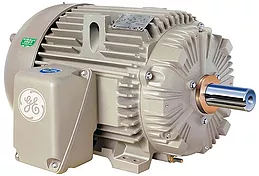Considerations when repairing a Two-Pole (3600 RPM) Electric Motor - HECO
December 16, 2020
Two-pole motors can be more challenging to repair because of the vibration issues that can be related to the units operating at higher speeds, which means there are special tests that need to be performed on them. Without checking characteristics such as runout and roundness, there is a chance that vibration won’t show up until you get your two-pole induction motor back and running.
Here is a Quick Review of Two-Pole Motors
Two-pole induction motors are just like other induction motors but they operate at 3600RPM versus 1800RPM, 1200RPM, or even slower. These motors are most often found in applications that need higher speeds such as conveyor belt systems, pumps, and air compressors. And the major issue with two-pole motors involves two things: speed and vibration.
At 60 Hz, a two-pole induction motor will operate at a synchronous speed of 3,600 rpm. At those speeds, everything is amplified, which means there are tighter tolerances involved for bearings, shafts, housing fits, etc. Any dimensional variations or frame distortions will play a significant role in how these motors perform.
Vibration of Two-Pole Motors
Because of the sensitivity of two-pole motors to dimensional variations, they are much more susceptible to vibration. Unless their testing, troubleshooting, and repair are handled very carefully, they will experience much higher levels of vibration. A different approach is taken to testing and repairing two-pole motors so that the end result will be a smooth-running, reliable motor.
When a two-pole motor is tested, it is placed on the testbed, shimmed, and securely clamped with a dial indicator on the foot to make sure there is no more than 1? spring on the foot. This is necessary because even a tiny bit of movement over 1? is enough to distort the frame of the motor and induce vibrations.
Testing Two-Pole Motors
There are also special tests that are performed on a two-pole motor. For example, runout checks are run using a lathe to zero in the journals and check the runout in references to the bearing journals. A good standard for two-pole motors is that the runout cannot exceed 0.003 TIR on the rotor core and 0.001 TIR anywhere else on the shaft. Outside of these tolerances, you could end up with a vibration issue when you operate the motor.
To make matters worse, that type of vibration cannot be detected when you are balancing the motor. It can only be picked up when the motor is running at full speed. Another potential issue for 2-pole electric motors is out-of-roundness of the bearing journals. On these motors, the out-of-roundness exceeding 0.0003″ can also lead to vibration.
Another potential problem for 2-pole motors involves cracked rotor bars. The rotor bars are subject to high stresses caused by centrifugal forces at high speeds, repeated starting, and thermal expansion. During evaluation of a 2-pole motor, the rotor bars need to be inspected for signs of loosening or damage. Methods used for detecting cracked rotor bars include growler tests, single phase rotor tests, high current rotor tests, current spectrum tests, and vibration spectrum analysis.
Conclusion
At HECO, we have years of experience working on two-pole induction electric motors and know how to keep the vibration under control. We have a special “two-pole checklist” that we utilize that covers over 2-dozen additional points versus other speed motors. We perform initial tests on every two-pole motor that comes into our facility, including test runs (If possible), runout, and out of roundness. When you get your motor back, you won’t have to worry about vibration showing up when it reaches full speed.
Posted in Repair
